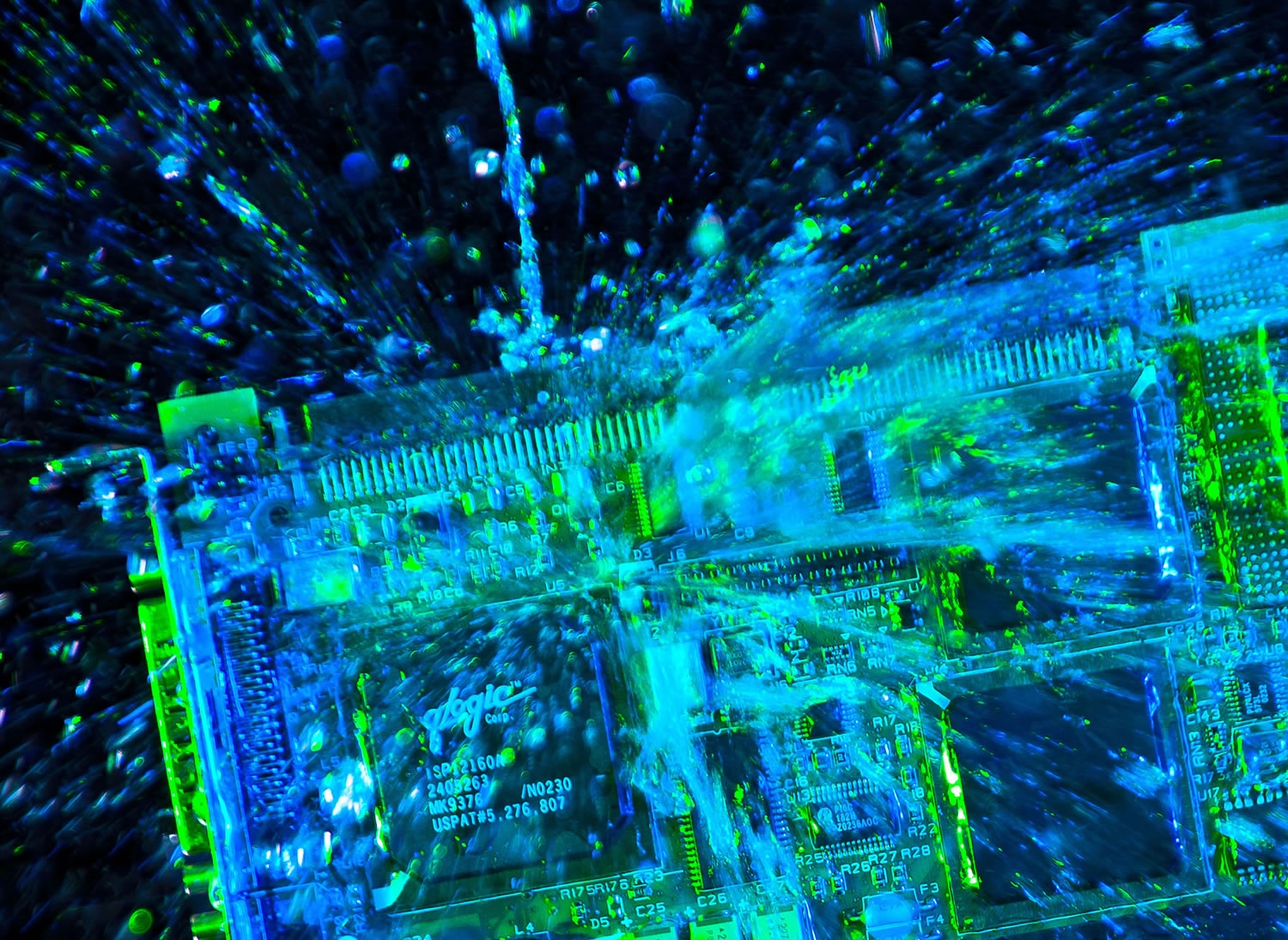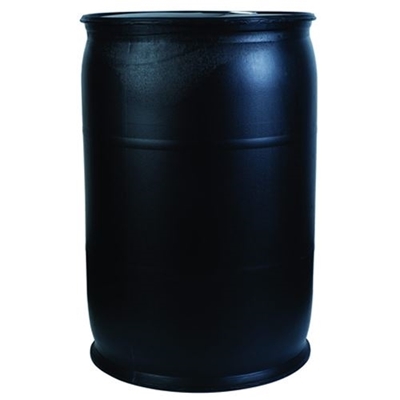Precise cleaning has become the Key Performance Indicator (KPI) to the reliability of today’s sophisticated electronics packages. Increased miniaturization, reduced standoff heights, and the transition from ‘flux around component’ to ‘flux under component’ mandates innovations to the cleaning process. More specifically, to eliminate flux residues under low standoff components, the cleaning agent must be able to reach as well as exit those tight spaces. Besides the choice of cleaning agent, the cleaning process itself must be optimized for spotless cleaning and maximum efficiency. An optimized cleaning process can ensure a profitable electronics manufacturing (and reworking) business.
This article addresses the parameters of the electronic cleaning process, potential optimization, and standard practices involved in the sub-processes (washing and rinsing). Case studies can enlighten the readers about recent advancements. Finally, Techspray products are highlighted which assist the process engineer in PCBA cleaning.
Optimizing Electronics Cleaning
Generally, there are two methods to perform electronic cleaning: In-line cleaning and Batch cleaning. Both techniques use a cleaning agent to decontaminate the PCBAs. Table 1 shows a brief comparison of the two techniques.
|
Batch Cleaning |
In-line cleaning |
|
PCBAs are cleaned together, similar to the technology used in dishwashers |
PCBAs are cleaned individually by running them on an automatic conveyor belt |
|
Suitable for small and medium production rates |
Suitable for large production throughputs |
|
Not effective for low standoff components (≤ 2mil) |
Effective for low standoff components (1 mil) |
|
Lower chemical consumption and emissions [1] |
Higher chemical consumption and emissions [1] |
Table 1: Batch vs in-line cleaning
In-line cleaning systems are more efficient for cleaning components with high-density bumps and low-stand-off clearances. Therefore, we’ll focus on the in-line cleaning process. Splitting the electronic cleaning process into further sub-processes allows detailed insights. These sub-processes include:
- Washing
- Rinsing
- Drying
Washing involves washing the PCBA with a cleaning agent. Rinsing removes the cleaning agent and leftover solder/flux residues, while drying ensures no contaminating residue remains. This article focuses on optimizing the first two sub-processes.
These are the decisive parameters to an effective cleaning process:
- Cleaning Agent (Chemical Energy)
- Cleaning Temperature (Thermal Energy)
- Impingement Force (Mechanical Energy)
- Cleaning Time
Cleaning Agent
In the electronics industry, there are two major types of cleaning agents – Water-based and Solvent-based cleaner. For an in-depth comparison of both types of cleaners, see “A Thorough Comparison of Water Based Cleaners and Solvent Cleaners”.
Water-based cleaner is safe to use and environmentally friendly compared to solvent-based cleaners. These popular and effective cleaners will be our focus.
For thorough cleaning, the cleaner’s chemistry must be able to solubilize the contaminants to be removed and must be assessed on a case-by-case basis.
Increasing the thermal energy (temperature) maximizes the cleaning potential for an aqueous cleaning agent. As the temperature increases, flux becomes softer and can be more easily penetrated with an water based cleaning agent with the help of mechanical energy [3]. Most organic residues dissolve better in hot water.
High temperature also reduces the surface tension of water to approximately 25 dynes/cm, and now it can easily penetrate tight spaces in the components we now produce, thus achieving spotless cleaning.
It is important to note that higher temperatures may cause etching or corrosion, increased evaporation losses, and increased maintenance costs for the equipment involved. For washing, generally, 80oC is the upper-temperature limit and for rinsing, it is 65oC. For a specific application, the choice of cleaning chemistry dictates the temperature requirement.
Rinsing Challenge of Water-Based Cleaner
‘Wetting’ defines the ability of a liquid to remain in contact with a surface [2]. Water, which serves as the main solvent in water-based cleaners, has a high surface tension (approximately 72 dynes/cm) compared to solvent-based cleaners. Due to its high surface tension, water possesses a poor wetting index and its ability to penetrate in and out of tight spaces (under ≤ 1 mil stand-off components) is very limited.
Because of this high surface tension, the removal of contaminants under tight spaces with pure water can be very challenging. To overcome this limitation, surfactants are added to reduce the surface tension of water in the washing sub-process. However, water-based cleaning requires rinsing afterward because these surfactants and other chemical additives that are effective for cleaning can impact the reliability of the final assembly.
Rinsing is performed using Deionized (DI) water which itself has high surface tension. As it is not possible to add surfactants to rinse DI water, the process engineer must manipulate other parameters to reduce the surface tension.
Impingement Force
In the rinsing sub-process, instead of using surfactants, the surface tension of DI water cleaning is reduced by mechanical means. The mechanical energy in the form of spray-in-air systems provides the physical (agitation) force to successfully eradicate leftover residues and contaminants from underneath the advanced packages. In simple words, mechanical energy reduces the particle size of water. The adjustment of mechanical energy can be done by optimizing nozzle pressure, nozzle angle, nozzle configuration, and nozzle type. Among many types of nozzles, these are the two most common:
- Solid Stream Nozzle – Produces a coherent stream of high-pressure fluid and omnidirectional movement [3]
- Delta Stream (V-Jet) Nozzle – Flat spray which provides uniform droplet distribution [3]
Increasing the number of spray bars in the rinse section can improve rinsing [4]. The spray pressure depends on the delicacy of the PCBA packages. Greater pressure produces smaller water droplets (and thorough cleanliness) but PCBAs may be damaged. Generally, diffused sprays are preferred over coherent sprays for rinsing [5]. In [3], a case study sought optimum conditions for rinsing. The operating conditions and results are summarized in Table 2 and Figure 1.
|
Package |
QFN & DFN |
|
Flux type |
No-clean and lead-free solder paste |
|
Stand-off height |
0.98 – 2 mils |
|
Nozzle type/angle |
V-jet (diffused) / 65o |
|
Flow Rate |
3.6 L/min |
Table 2: Case study parameters [3]

Figure 1: Detailed analysis of the rinsing stage [3]
The case study concluded that effective rinsing can be achieved using diffused spray with a low spray angle, medium pressure, and high flow rate. In another study [6], the use of Intermix High Volume Nozzles (alternating V-jets and JIC spray bars) was found to be the most efficient for RMA and no-clean pastes.
Cleaning Time
The outcome of cleaning significantly depends on the time the boards are exposed to the cleaner and DI water. While shorter cleaning time increases throughput, it does not guarantee thorough cleaning. Therefore, the job of a process engineer is to find out the minimum time required for spotless cleaning. Process engineers must remember that PCBA cleaning is only as effective as the final rinse.
The exposure time in inline cleaning system is inversely proportional to the speed of the conveyor belt. Generally, a faster conveyor belt (reduced exposure time) will not result in thorough cleaning, whereas a slower speed can result in spotless cleaning (washing + rinsing) underneath 1 mil standoff clearance [4], but it will decrease throughput and reduce profits.
It is the ‘Impingement Force’ that plays the key role in optimizing the cleaning process – be it the surface tension or overall cleaning time. The choice of impingement force (spray manifold configuration) may vary with the types of solder pastes. The outcome of cleanliness with different solder pastes and spray manifold configurations are studied in [6]. The results are summarized in Table 3.
|
Types of paste |
Spray manifold configuration |
Minimum dwell time (minutes) |
Cleanliness (percentage) |
|
RMA |
Intermix HV |
5 |
99 |
|
No Clean |
Intermix HV |
5 |
98 |
|
Water Soluble |
V-Jet HV |
0.55 |
99 |
Table 3: Dwell time vs spray manifold configuration for different pastes [6]
Techspray’s Line of Inline Flux Remover Spray
To conclude, cleaning does not depend on a single parameter. To optimize the process for maximum efficiency and spotless cleaning, iterative testing with a combination of parameters is required.
With over four decades of successful experience in electronic cleaning, Techspray possesses the technical expertise to aid process engineers identify the ideal cleaning process for their application. Moreover, Techspray offers its full line of powerful defluxers and inline cleanering system that reduce overall operation cost and increases throughput. Its RoHS compliant ECO-DFLUXER SMT 100 is a water-based environmentally-friendly cleaner used globally and which is suitable for both batch and inline processes. A unique combination of saponifiers and solvents helps process engineers reduce surface tension and increase penetration power of water under low standoff heights. The ultra rinsability of this cleaner makes the cleaning process faster. Other features include:
- Effective on wide range of solder and fluxes
- Nonflammable
- Low Volatile Organic Compounds (VOC)
For applications involving sensitive metals, Techspray’s ECO-DFLUXER SMT 200 is the best product to make life easier for process engineers.
Techspray’s TechLab offers state-of-the-art cleaning, coating and analytical services to help customers qualify new products and optimize their processes. Cleaning equipment includes inline, batch, ultrasonic, and vapor degreasing systems. This equipment allows us to better duplicate your production environment for process optimization and troubleshooting.
Contact Techspray at 678-819-1408 or info@itwcce.com for free TechLab qualification testing. We are available to help qualify new cleaning processes, evaluate current processes, or troubleshoot contamination issues.
References
|
[1] |
AAT, "Austin American Technology," [Online]. Available: https://aat-corp.com/2020/11/23/batch-cleaning-vs-inline-cleaning-which-is-better-j/#:~:text=In%20general%2C%20In%2Dline%20cleaners,small%20to%20medium%20production%20volumes.. [Accessed 25 1 2023]. |
|
[2] |
C. technology, "Cleanroom technology," [Online]. Available: https://www.cleanroomtechnology.com/news/article_page/Does_your_cleaning_have_the_wettability_factor/148203. [Accessed 25 1 2023]. |
|
[3] |
R. P. Guan Tatt Yeoh, "Critical Cleaning Requirements to Overcome Advanced Packaging Defluxing Challenges," in 2022 IEEE 39th International Electronics Manufacturing Technology Conference (IEMT), Kuala Lumpur, Putrajaya, Malaysia, 2022. |
|
[4] |
M. J. P. M. Umut Tosun, "Evaluating Rinsing Effectiveness in Spray-In-Air Cleaners," in Proceedings of SMTA International, Manassas, VA, USA, 2016. |
|
[5] |
K. P. M. K. Pierce Pillon, "TECHSPRAY," Techspray, [Online]. Available: https://www.techspray.com/webinar-batch-pcba-cleaning-optimizing-for-maximum-output. [Accessed 28 1 2023]. |
|
[6] |
J. Saultz, "SPRAY NOZZLE CONFIGURATIONS IN AN INLINE CLEANER AND ITS EFFECTS ON CLEANLINESS," Itweae. |









